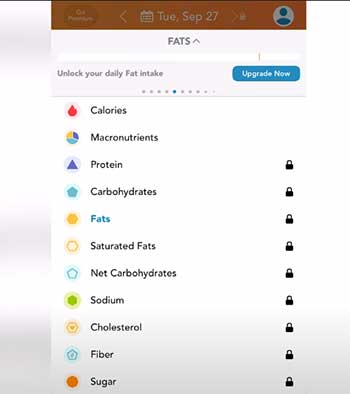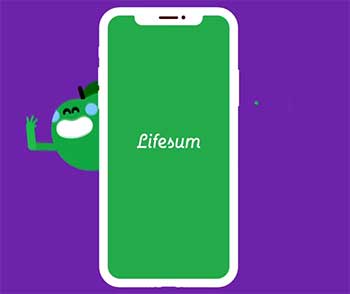Calorie counting and diet tracking apps have become incredibly popular in recent years as useful tools for people trying to lose weight and improve their health. Two of the most popular options are Lose It and Lifesum – but is one better than the other?
This comprehensive guide examines the key features, pros and cons of each app to help you decide.
A Brief Comparison Table of Lose It And Lifesum:
| Feature | Lose It | Lifesum |
| Setup | Simple, quick to get started | More onboarding steps |
| Food Database | Huge generic and brand name database | Extensive international food database |
| Barcode Scanning | Yes | Yes |
| Serving Sizes | Adjustable | Adjustable |
| Recipes | Add manually | Thousands of recipes built-in |
| Goal Setting | Target weight with projected rate | Nutrition goals presets |
| Weight Loss Focus | Calorie budget with projections | General calorie tracking |
| Exercise Logging | Comprehensive database to deduct calories | Limited database |
| Meal Planning | Basic recipe clipping | Robust meal plan templates |
| Tracking/Reports | Charts for calories, macros, nutrients | Visual bars show nutrition intake |
| Premium Features | Advanced analytics and custom goals | Tailored meal plans and coaching |
| Ease of Use | Very simple, intuitive interface | More visual but crowded navigation |
| Motivation | Social groups, trends | Reminders and graphics |
| Free Version | Full features ad-free | Very limited (3 meals/day max) |
| Price | Free or $39.99/year | $9.99/month or $69.99/year |
An Overview Of Lose It And Lifesum
Lose It and Lifesum have many similarities, as they both allow you to log food intake, track nutrients and calories consumed, set weight loss goals and remind you to log meals. However, there are some differences:
Lose It

- Established in 2008, one of the first calorie counter apps
- Simple and easy to use interface
- Comprehensive food database with barcode scanner
- Exercise log to subtract burned calories
- Social features like friend challenges
- Premium option with advanced analytics
Lifesum
- Launched in 2012 in Sweden, now has 50 million users
- Sleek design with colorful graphics
- Huge international food database across 150 countries
- Customizable meal plans and recipes
- Integrates with wearables like Fitbit and Apple Health
- Paid plans provide personalized nutrition advice
Both apps are free to download and use with basic features, with paid premium options unlocking more advanced nutrition analysis, insights and customization.
Key Features Comparison Between Lose It And Lifesum
Here’s an in-depth look at how Lose It and Lifesum stack up across the most important features for diet and weight loss tracking:
Food Logging
Lose It and Lifesum both make logging meals easy by allowing you to search their extensive databases or scan barcodes to automatically log foods.
Lose It has an extremely comprehensive database for generic and branded foods. It’s easy to find nutritional info and serving sizes are adjustable. Recipes can also be input manually along with custom foods if something is missing.
Lifesum also has one of the largest international food databases covering 150 countries. It includes generic and local brands across a multitude of cuisines. Serving sizes are adjustable and you can scan recipes or custom create foods.
Winner: Tie – both apps excel at food logging with accurate databases.
Goal Setting
Setting a weight loss or health goal is essential for staying motivated.
Lose It allows you to set a target weight, weekly weight loss rate and calorie budget. All food logging will subtract from your budget and project if you’re on track.
Lifesum focuses more on nutrition goals and ideal macro balances based on your needs. Choose low carb, balanced, high protein and other presets. A calorie budget is still provided for weight loss.
Winner: Lose It – the weight loss forecasting and calorie budget focus is extremely helpful.
Tracking Nutrition
Understanding detailed nutrition intake is key to balanced diets and fueling workouts.
Both apps excellently break down calories, macronutrients, vitamins and minerals per day and per food item. Lose It has pie charts for macro splits, while Lifesum uses colorful bars.
Lifesum connects certain nutrients to body functions like immunity or muscle building for greater context on their role. But Lose It provides more micronutrients.
Winner: Tie – the nutrient tracking is very comprehensive in both apps.
Read More: Comparison Between NCSF And ACE Certification Programs
Exercise Logging
Logging workouts is useful to subtract extra calories burned for greater accuracy.
Lose It has an exercise database to select activities and duration to calculate calories burned, which are deducted from your budget. Custom activities can be added too.
Lifesum also estimates calories burned per workout logged. However, the exercise database is more limited compared to food logging.
Winner: Lose It – the exercise database and calorie burn integration is much better.
Meal Planning
Meal planning features help users plan healthy recipes and meals within their diet goals.
Lifesum excels in this regard with thousands of tasty recipes sorted by calorie or nutrient goals. Meal plan templates create daily meal schedules meeting your needs.
Lose It recently added recipe clipping to meal plan upcoming days using favorites or community recipes. But the functionality is limited compared to Lifesum.
Winner: Lifesum – extensive recipes and meal planning tools beat out Lose It.
Premium Features
Both apps offer premium subscriptions unlocking additional in-depth analytics and customization for $40-50 annually.
Lose It’s premium provides macro breakdowns, cholesterol tracking, graphs and analysis of nutrient averages. Custom goals and advanced settings available.
Lifesum’s premium “Coach” gives personalized meal plans tailored to your body and life. You also get unlimited chatting with nutritionists plus blood sugar tracking.
Winner: Lifesum – extremely detailed custom nutrition guidance provides more value.
Ease of Use
An app can have all the features in the world, but poor usability hampers the experience.
Lose It shines for simplicity with an intuitive and clean interface. Log meals quickly, view summaries, and track everything easily day-to-day. The learning curve is minimal.
Lifesum has more visual flair but menus and navigation feel more crowded. There are more onboarding steps to fully setup nutrition targets and meal planning.
Winner: Lose It – the uncomplicated and responsive design makes using it effortless.
Read More: Comparison Between Flexpro Meals And Trifecta
Motivation & Accountability
Keeping users engaged and accountable is key for continual use to hit health goals.
Lose It’s groups let you join communities or compete against friends on weight loss leaderboards. The progress page graphs weight trends over time for accountability.
Lifesum sends push notification reminders to log meals and exercise. Pro social features are limited, but the colorful graphics and nutrition visuals inspire you to eat balanced.
Winner: Tie – both motivate through social features or design, but in different ways.
Price
Pricing plays a role in app choice if you’re deciding between paid or free plans.
Lose It has an extremely generous free version with all core features and ad-free experience. Premium upgrade is $39.99 yearly.
Lifesum’s free version is more limited over time – you can only log 3 meals or 1 food item per day. Premium is $9.99 monthly or $69.99 annually.
Winner: Lose It – the free offering has way more tracking ability compared to Lifesum.
Pros And Cons Of Lose It And Lifesum
Lose It Pros
- Simple and intuitive interface
- Huge international food database
- Comprehensive exercise logging
- Weight loss forecasting and calorie budget focus
- Generous free plan with all core features
Lose It Cons

- Less meal planning functionality
- Weaker nutrition advice and customization
- Can only change calorie goals in desktop app
Lifesum Pros
- Attractive, visual design
- Meal plans and recipes for guidance
- Customizable nutrition plan presets
- Connects food to health functions
- Provides chat access to nutritionists
Lifesum Cons
- Steeper learning curve
- Limited free version
- Less detailed exercise database
- Primarily focused on nutrition over weight
Frequently Asked Questions (FAQ): Lose It Vs. Lifesum
Lifesum is a very good diet tracking app overall. However, Lose It matches or beats most of Lifesum’s core features, so it could be considered better for many users’ needs. Lose It has a superior food database, exercise logging, weight loss targeting, and free plan.
Lose It is one of the top calorie counter and diet apps available. Lifesum has better meal planning capabilities and nutrition guidance. But Lose It still wins out for its simplicity, comprehensive logging, and focus specifically on weight loss management.
Based on user popularity and app store ratings, Lose It is arguably the #1 weight loss app available. MyFitnessPal also competes for this distinction, but Lose It pulls ahead with its intuitive design and comprehensive free version.
Lifesum’s premium version provides helpful customized meal plans, nutrition advice, and coaching access. So the upgrade can be worthwhile for some users wanting that enhanced guidance and accountability. But the free version is very limited, so you may want to test out the basic app before committing.
Watch the video to learn more!
The Bottom Line
When evaluating Lose It versus Lifesum, Lose It comes out on top overall based on its stellar free offering, intuitive logging, weight focused features and comprehensive databases.
However, Lifesum isn’t too far behind and excels in certain areas like meal planning and visual nutrition analysis. So your personal priorities and needs will determine which app best complements your wellness goals.
Hopefully this detailed comparison gives you clarity on which diet tracking app aligns with your desired approach to health, nutrition, and weight management.
Whichever app helps keep you consistent and accountable on your journey is the right choice!
